Agricultural Water Stress on US Native Lands
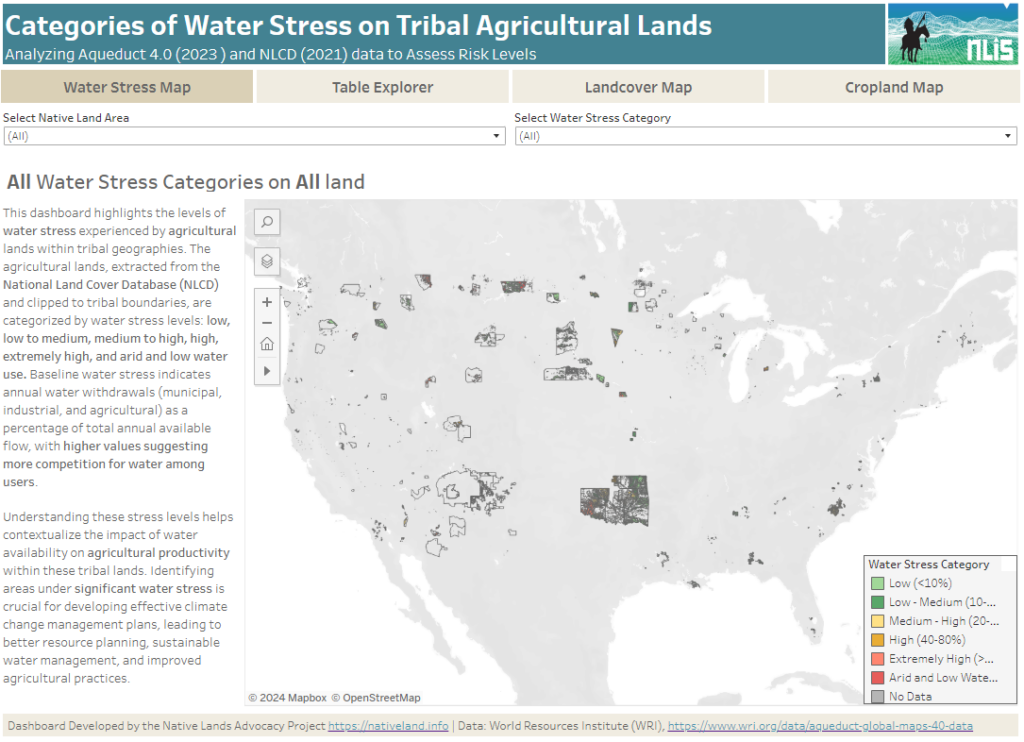
About this Dashboard This data dashboard summarizes data from the World Resources Institute, and the National Land Cover Database for Native Lands in the United States. It highlights the distribution and impact of water stress on agricultural lands within Native boundaries. The dashboard features detailed maps and interactive elements, allowing users to explore different water […]
Soil Organic Carbon Planning, Key to Building Tribal Climate Resiliency
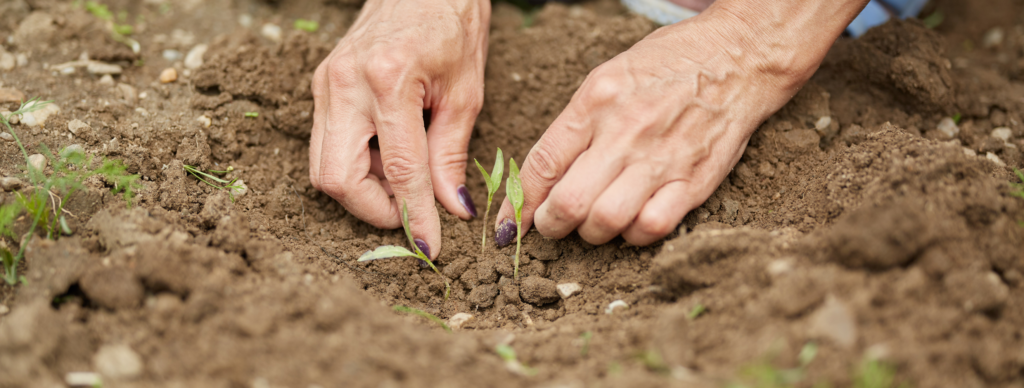
As tribes continue to experience the impacts of climate change on their lands and communities, they are starting to invest more of their resources and planning strategies into protecting and enhancing their soil organic carbon (SOC).
Crop Diversity on Native Lands
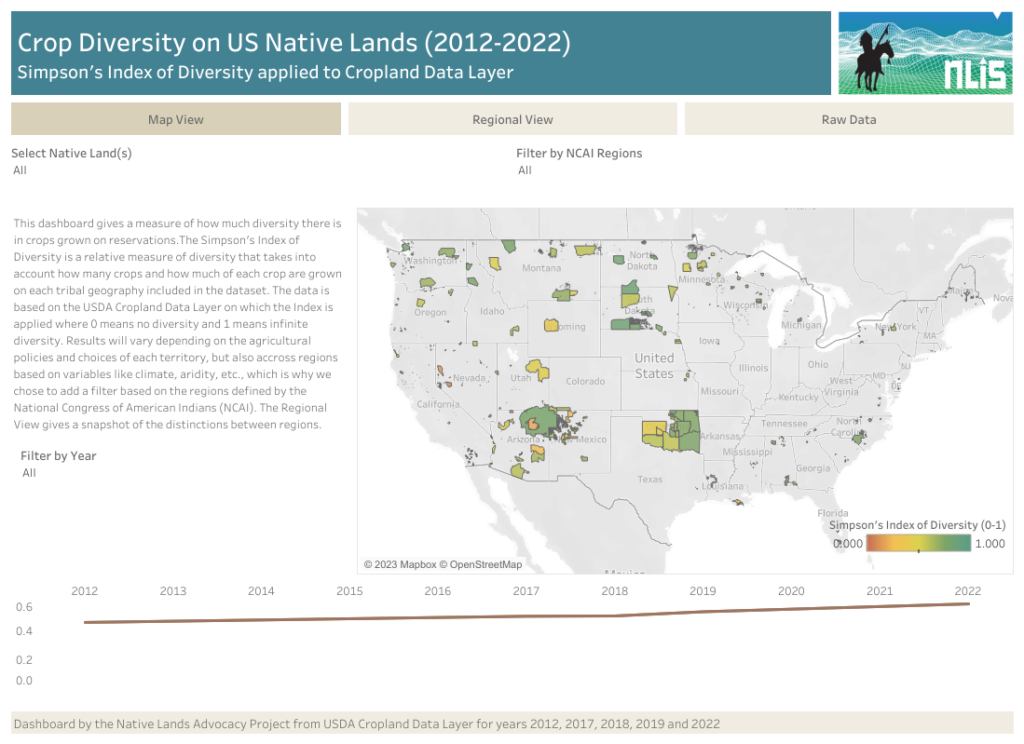
Our new Cropland Diversity data dashboard is the first index of Cropland Diversity ever calculated and published for US Native Lands. What findings does this dashboard reveal? And why does this data matter?
The Power of Asdzáán in Agriculture: Data Shows Native Female Majority Among Navajo Operators

Of the 73 reservations that participated in 2017 Census of Agriculture, only the Navajo Nation and the Umatilla Confederated Tribes reported a Native female majority among their agricultural operators.
Reservation Croplands: How Native Farmers and Ranchers Can Leverage the USDA’s Cropland Data Layer for Land Planning

In 2022, there were about 110 million acres of cropland (5.7%) on Native American reservations (including on-reservation and off-reservation trust lands). What are these croplands and land covers? How have they changed over time? Why does this data matter?
Environmental Risks for US Native Lands (Drought, Heat, Rain, Wildfire: 1980-2020)
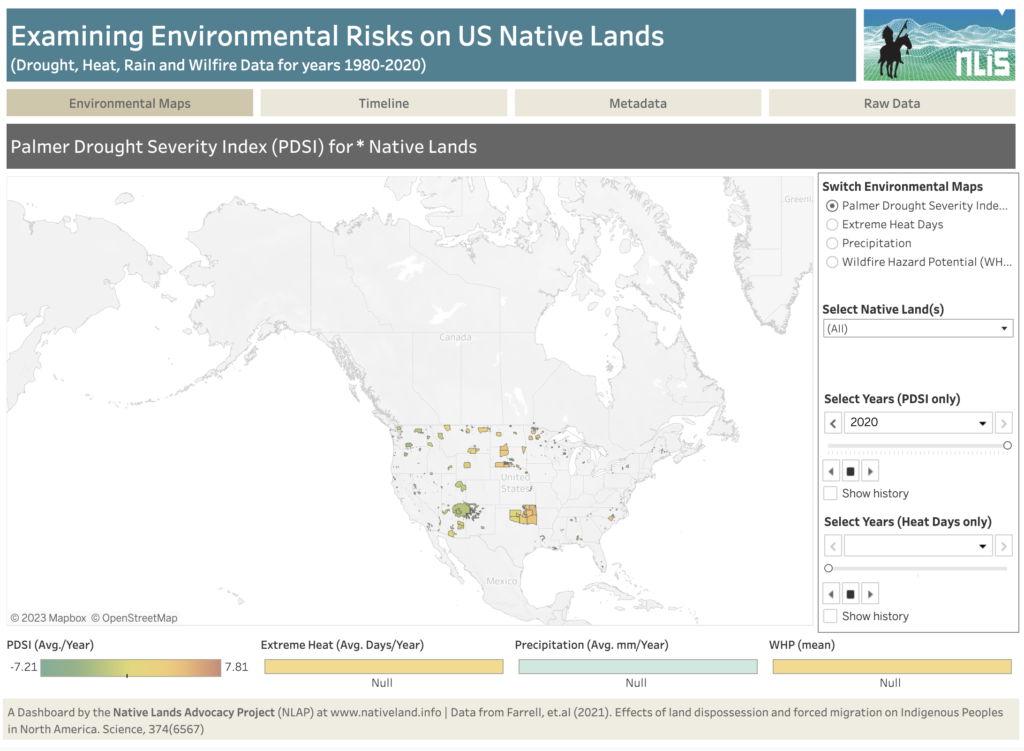
About this Dashboard This dashboard shows key environmental risks data for US tribal lands to help tribes monitor and assess risks and incorporate them in their land planning and decision-making. Data comes from the recent article: Farrell, J., Burow, P. B., McConnell, K., Bayham, J., Whyte, K., & Koss, G. (2021). Effects of land dispossession […]
Soil Organic Carbon for Land Planning on Native Lands
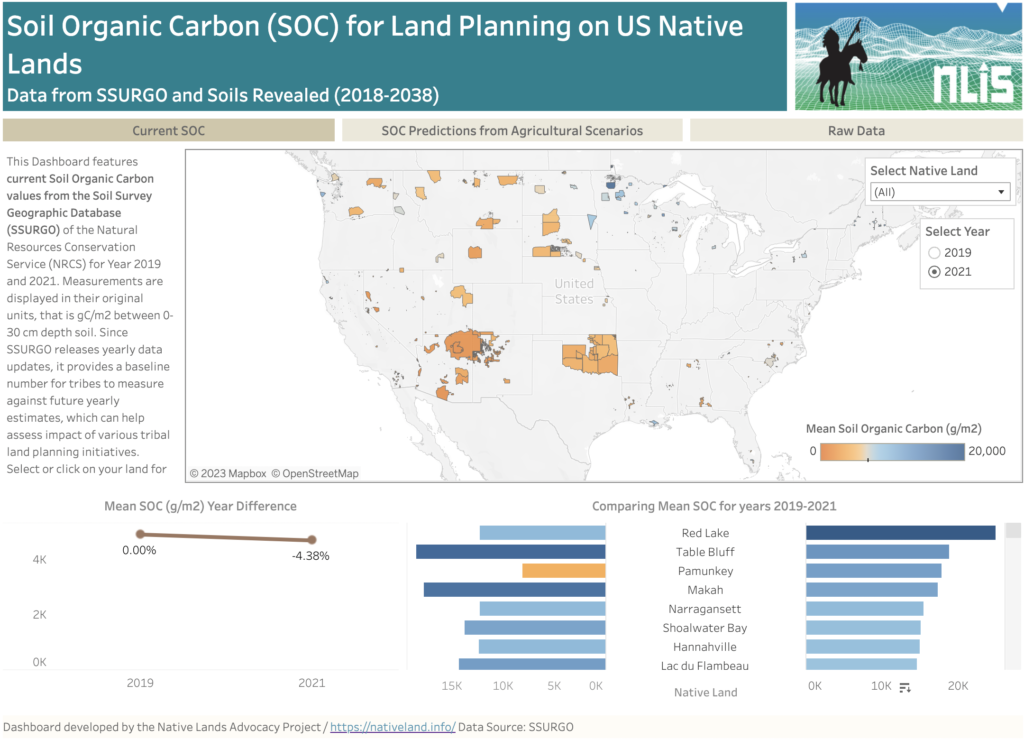
About this Dashboard This data dashboard summarizes past and present Soil Organic Carbon (SOC) data for all Native Lands but also future estimates depending on different agricultural scenarios. Data comes from the Soils Survey Geographic Database (SSURGO) for past and most to date available values (2019 and 2021). For future scenarios, we used estimates from […]
Building Up Native Youth in Agriculture

How well-represented are Native youth in the overall population of Native agriculture producers? What difficulties do Native youth face when entering agriculture, and what resources exist to support and empower them?
2023 Farm Bill: Native Farm Bill Coalition Priorities & How the NLIS Can Help
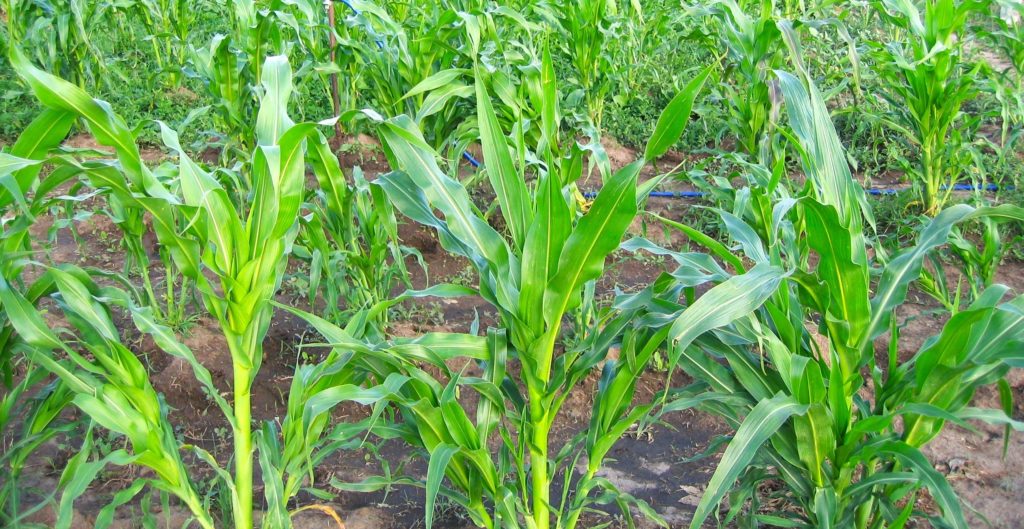
By Raven McMullin It goes without saying that the food system in the United States was created without the intent of maintaining or supporting traditional Native foodways. In fact, more than neglecting these traditional systems, new settlers sought to destroy Native food sources and economies—forcing dependence upon a strange and commodified food chain. However, traditional […]
New Demographic Features Added to NLAP’s Agriculture on Native Lands Data Dashboard
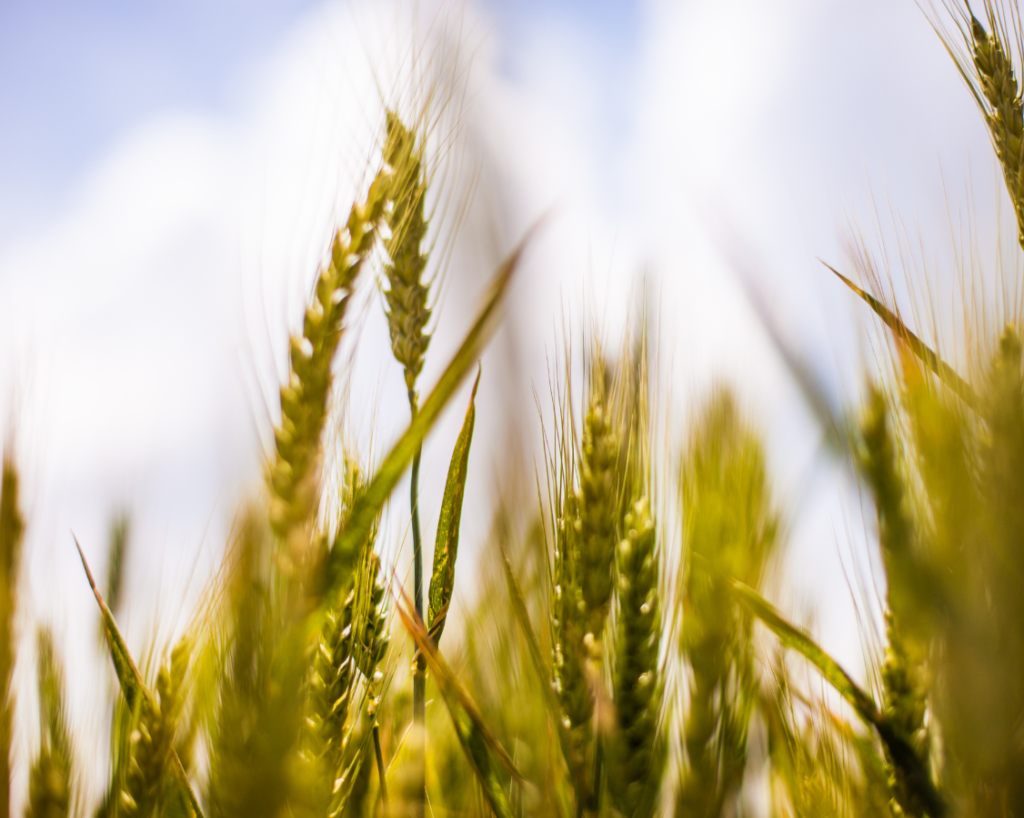
By Raven McMullin and Emma Scheerer Using our Agriculture on Native Lands Data Dashboard, you can now explore the age demographics of Native producers on Native lands! Through previous blog posts, story maps, and data dashboards, the Native Lands Advocacy Project (NLAP) has embarked on an extensive and critical analysis of the state of agriculture […]
US Drought Monitor (Google Earth Engine)
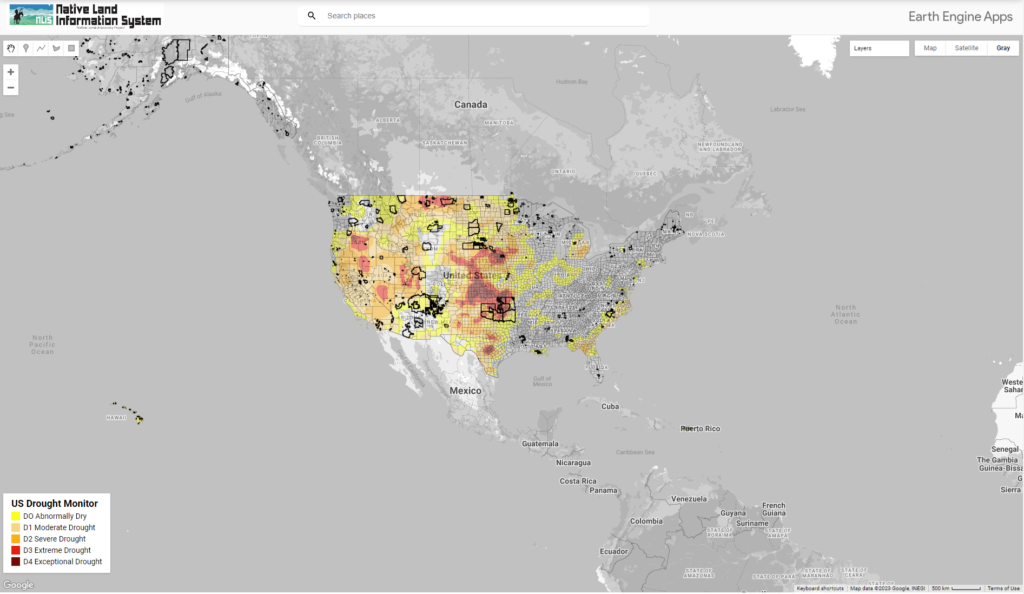
This map displays US Drought Conditions updated every Thursday as reported by National Drought Mitigation Center (NDMC)
Lakota Organic Growers Embrace Food Sovereignty in Times of Drought and Scarcity
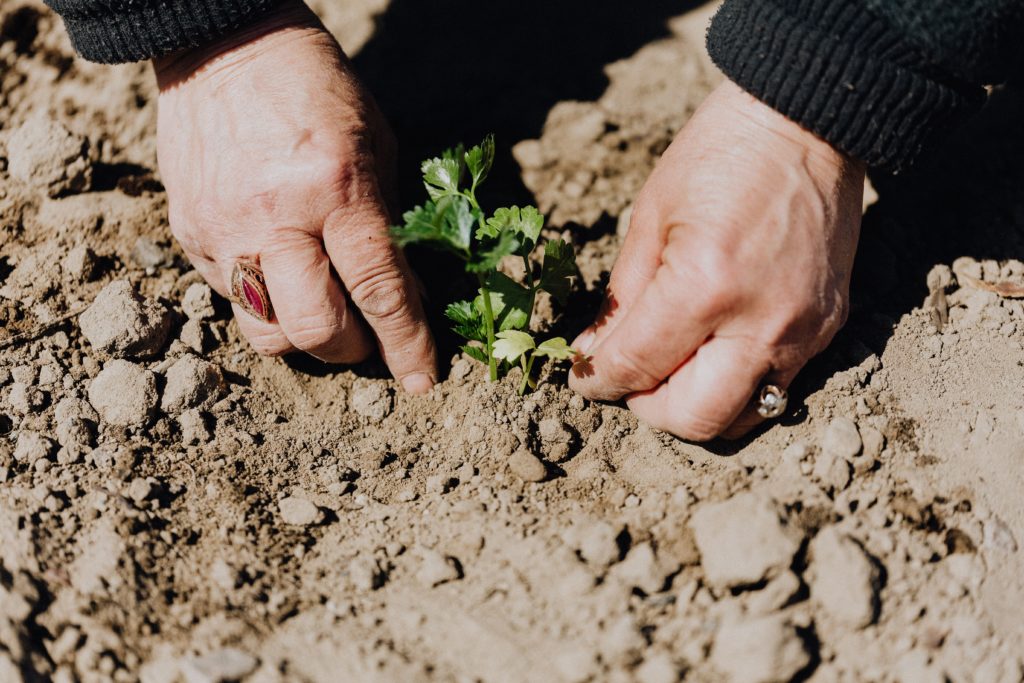
This blog is the second of two posts analyzing the challenges Native communities face accessing clean, sustainable water. Click here if you’d like to read part one. In South Dakota, west of the Missouri River, Lakota farmers have taken steps toward food sovereignty while grappling with limited funds, contaminated wells, and droughts. On the Pine Ridge reservation, semi-arid […]
